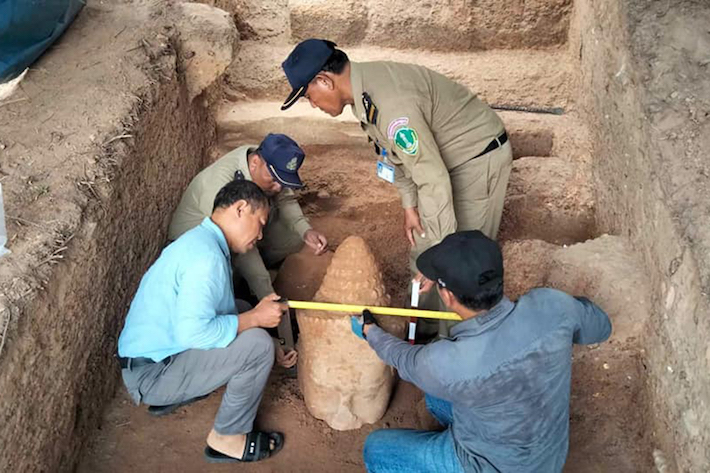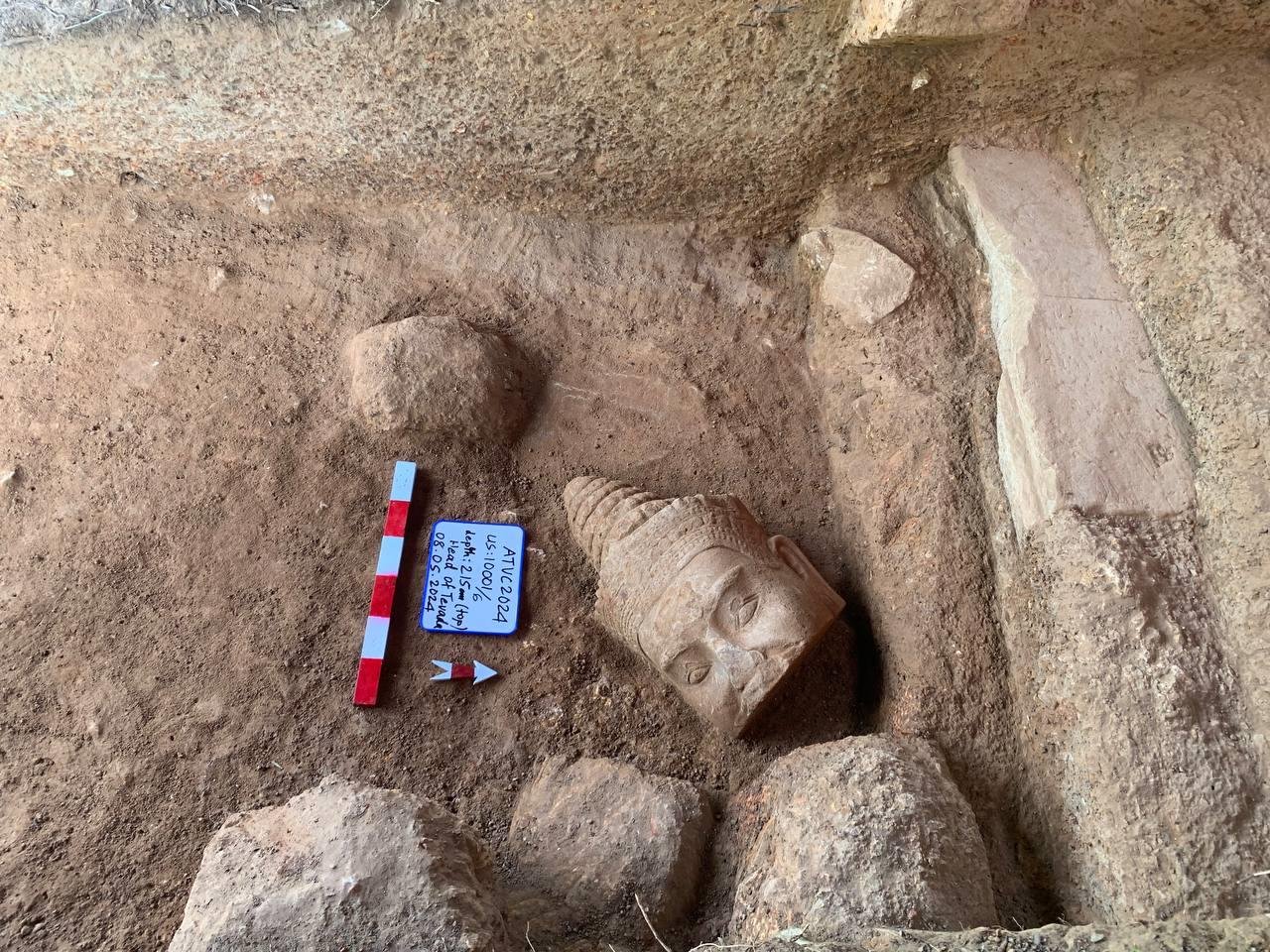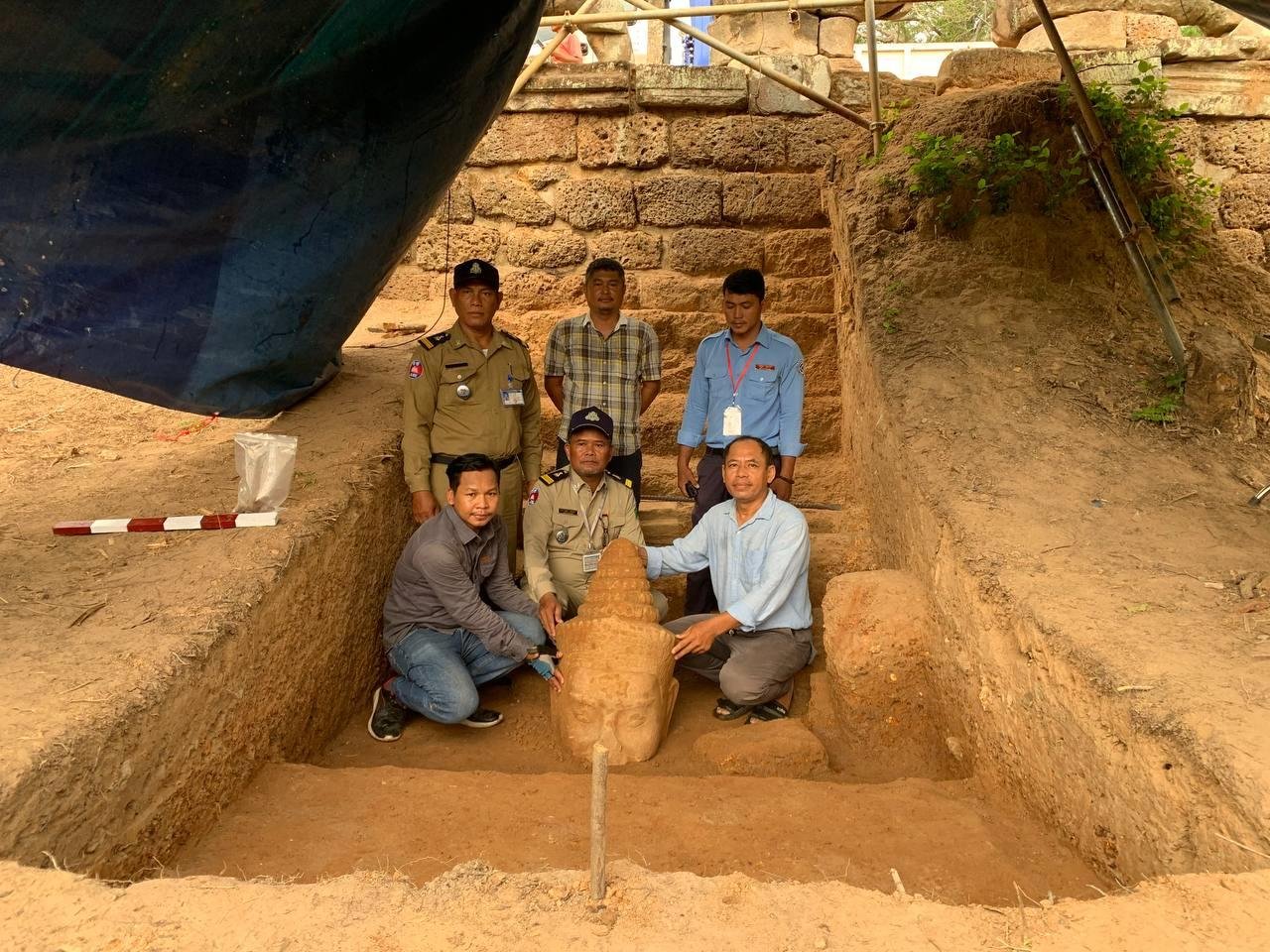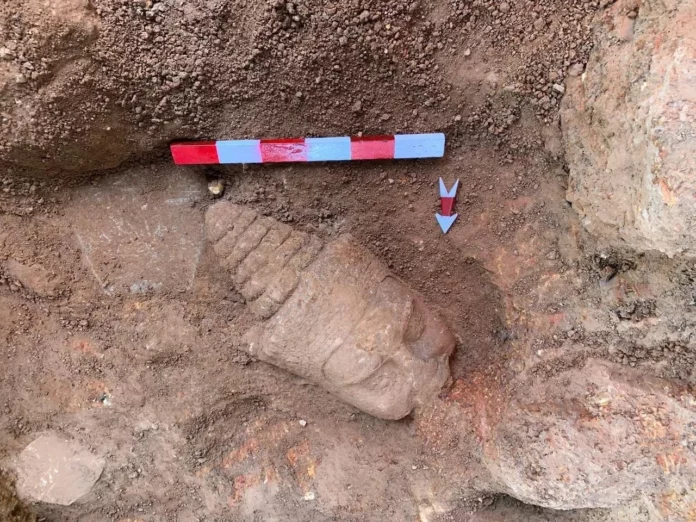Angkor Thom, the majestic city founded by King Jayavarman VII in the late 12th century, stands as a testament to the Khmer Empire’s architectural prowess and cultural zenith. This ancient citadel not only symbolizes the empire’s grandeur but also its profound spiritual and cultural significance, rooted in Buddhism and mythological narratives.
Unearthing a Lost Treasure

Recently, amidst ongoing archaeological excavations at Angkor Thom’s Victory Gate, a remarkable discovery has come to light. Archaeologists have uncovered the well-preserved head of a Deva statue, believed to be part of the 23rd statue that once adorned this monumental entryway. Carved from sandstone, the head measures 20 centimeters in length and 11 centimeters in width, offering a glimpse into the meticulous craftsmanship of the ancient Khmer artisans.
The Victory Gate itself holds immense symbolic importance, featuring statues depicting devas and asuras from Hindu mythology, illustrating the Churning of the Ocean of Milk. This mythological tableau not only embellishes the gate but also underscores the cultural amalgamation present within Angkor Thom.
Cultural and Historical Significance

Beyond its architectural splendor, Angkor Thom embodies the Khmer Empire’s rich history and spiritual ethos. King Jayavarman VII’s reign marked a period of monumental construction and social reforms, emphasizing Buddhism and establishing a welfare state unparalleled in its time. The discovery of the Deva statue head enriches our understanding of this era, highlighting the empire’s artistic achievements and religious devotion.
An Sopheap, leader of the archaeological team, remarks, “The recovery of the Deva statue head adds to the extensive archaeological legacy of Angkor Thom, shedding light on the intricate history and craftsmanship of the ancient Khmer civilization.”
Preservation and Future Prospects

The excavation at the Victory Gate is a pivotal component of APSARA’s comprehensive restoration endeavor, meticulously crafted to ensure Angkor Thom’s enduring structural integrity and historical relevance. This ambitious initiative goes beyond mere preservation; it strives to revive the ancient city’s cultural vibrancy, offering profound insights into Khmer civilization’s artistic achievements and spiritual heritage. By safeguarding Angkor Thom, APSARA not only protects a UNESCO-listed World Heritage Site for posterity but also fosters a deeper global appreciation of its cultural richness and historical significance.
Conclusion
Angkor Thom, nestled within the UNESCO-listed Angkor Archaeological Park, continues to captivate global interest as a beacon of Khmer heritage and ancient civilization. The recovery of the Deva statue head serves as a poignant reminder of the empire’s enduring legacy, inviting us to delve deeper into its history and marvel at its architectural splendor. As efforts to conserve Angkor Thom unfold, the site remains a testament to human ingenuity and cultural exchange, offering a timeless connection to our shared past.
This discovery not only enriches Angkor Thom’s archaeological heritage but also provides invaluable insights into the history and craftsmanship of the ancient Khmer civilization. As efforts to preserve Angkor Thom continue, its significance as a global cultural treasure grows ever more profound.
